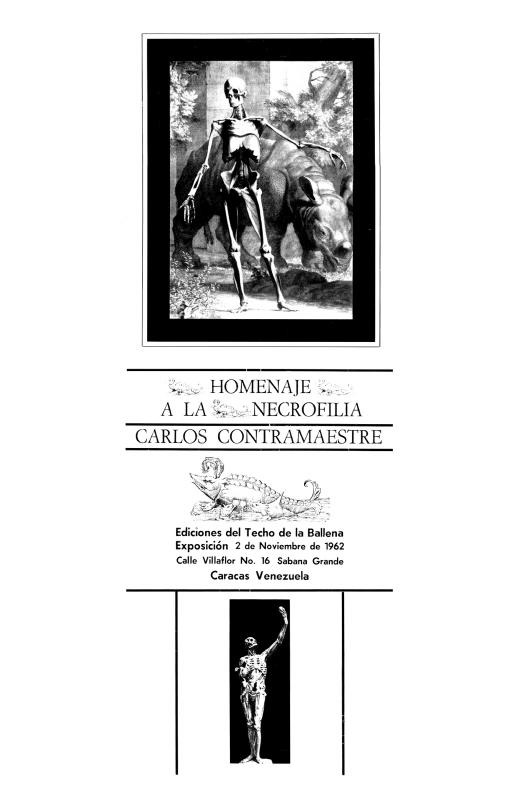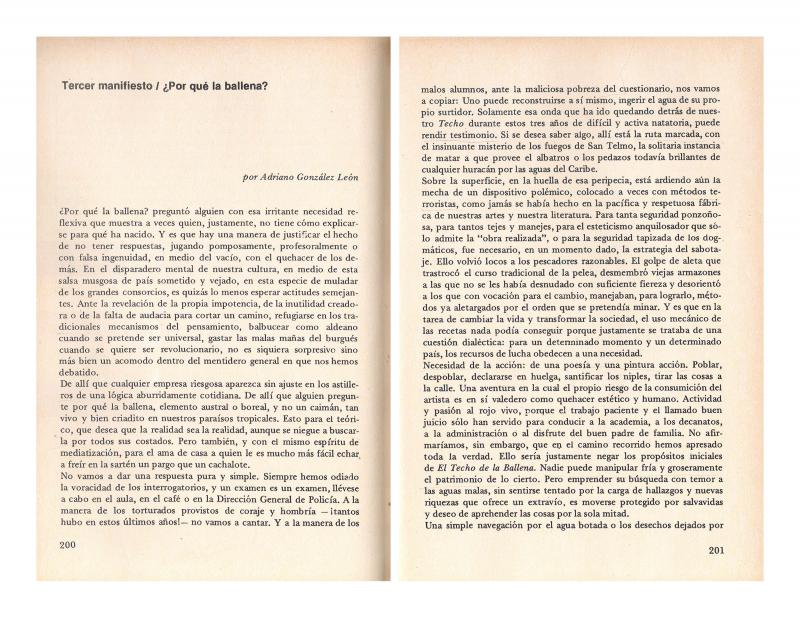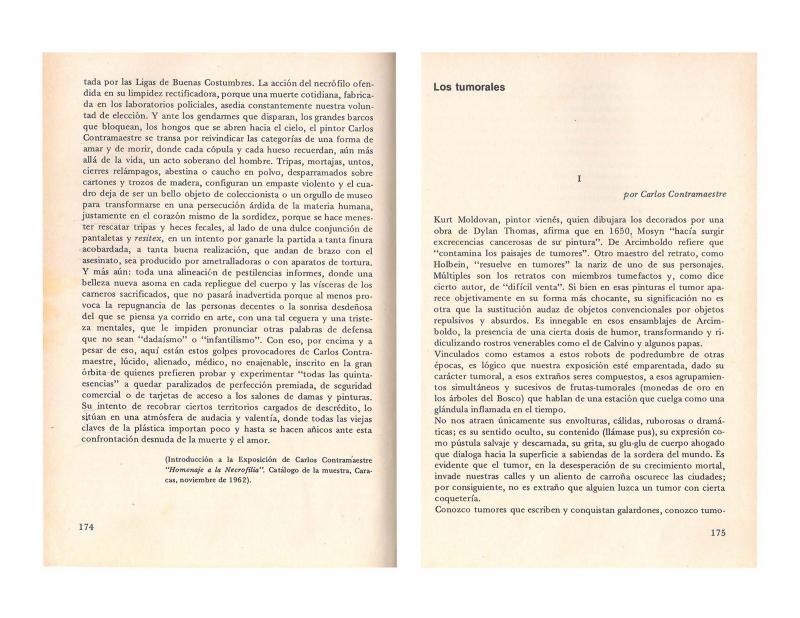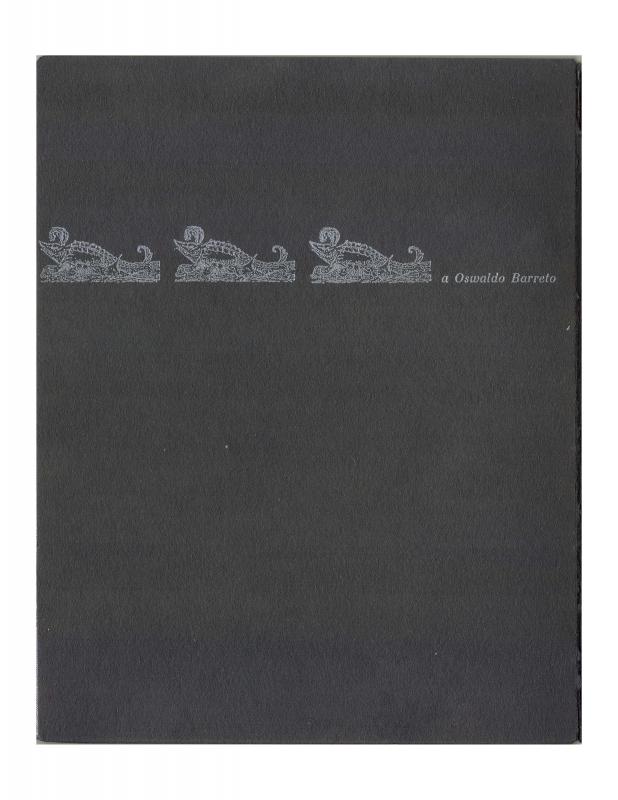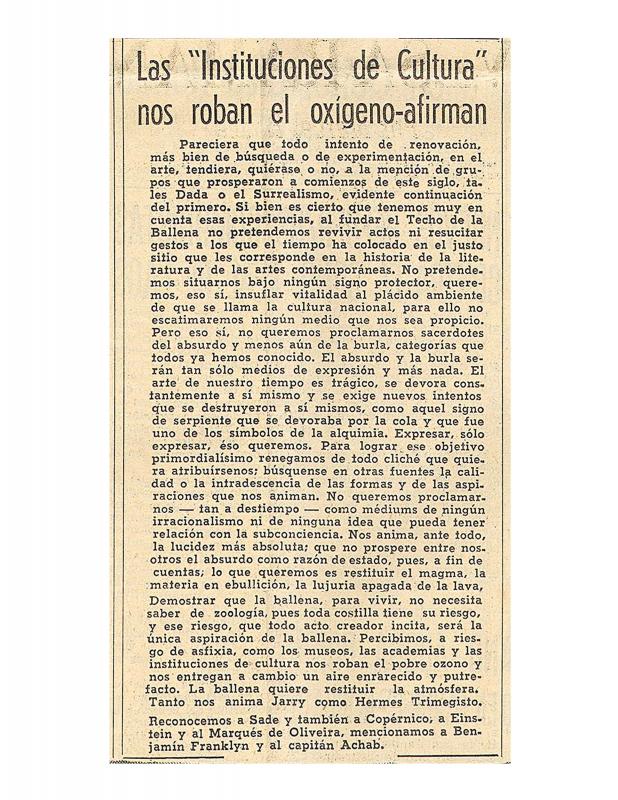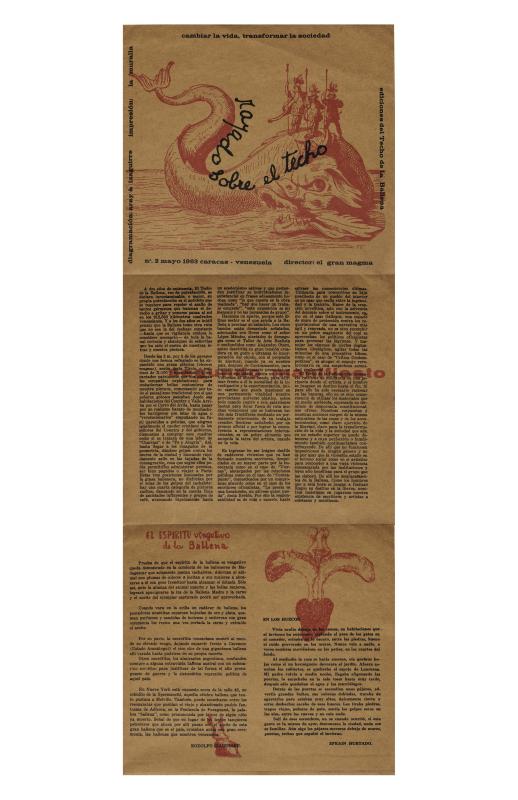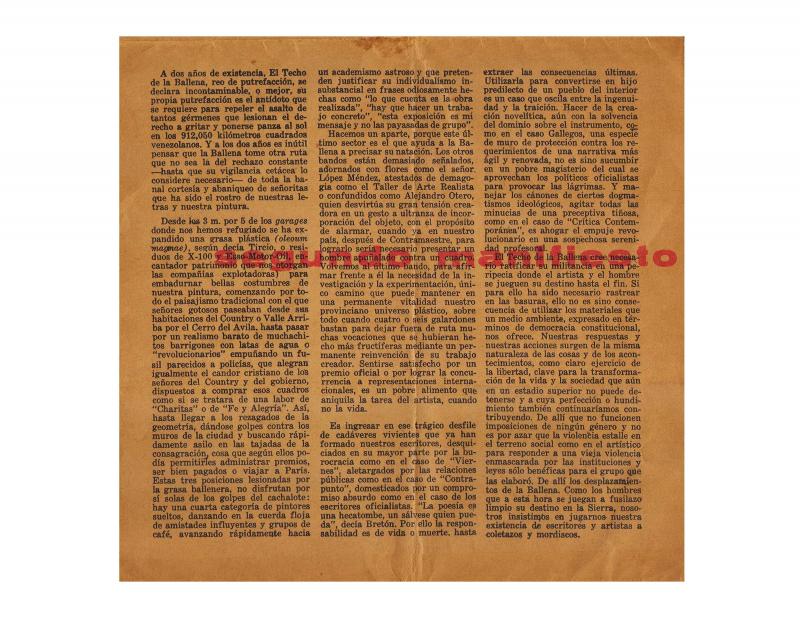El Techo de la Ballena was an avant-garde group of Venezuelan visual artists and writers active from 1961 to 1968. They combined different disciplines (visual art, poetry, photography, film, and action art, among others) to create revolutionary art that questioned and disputed traditional social and cultural values in the context of a decade riddled with political violence, which they mirrored in the realm of art. The framework for the group’s activity was the guerrilla movement, the formulations of the intellectual left, political repression, and a city deformed by accelerated and forced growth under the developmentalist model embraced by a recent democracy under Rómulo Betancourt (president from 1959?64). Their aesthetic was tied to Informalism with a strong dose of aggression to contest the values of abstract geometry, traditional landscape art, and even social realism; their strategy embraced subversion and provocation, the irrational and the surrealist. They published a good many texts—among them, three issues of the magazine Rayado sobre el Techo—and organized a good many exhibitions. The members of the group included Venezuelan artists Carlos Contramaestre, Juan Calzadilla, Caupolicán Ovalles, Edmundo Aray, Francisco Pérez Perdomo, Salvador Garmendia, Adriano González León, Fernando Irazábal, Daniel González, Gabriel Morera, Gonzalo Castellanos, and Perán Erminy, as well as artists from other countries who were living in Venezuela at the time, such as Dámaso Ogaz (from Chile) and J. M. Cruxent, Ángel Luque, and Antonio Moya (from Spain).
The editors of the first issue of Rayado sobre el Techo were architect and writer Gonzalo Castellanos; visual artist and poet Juan Calzadilla; physician, visual artist, and poet Carlos Contramaestre; poet Edmundo J. Aray; film critic Rodolfo Izaguirre; and visual artist Gabriel Morera. Visual artist Ángel Luque was responsible for the magazine’s layout and illustrations. The magazine’s two principal texts, “Para la restitución del magma” and “El gran magma,” express the intentions and beliefs of those associated with Sardio, an avant-garde group active in Caracas from 1958 to 1961. The surveys “¿Cree Ud. que la pintura debe desaparecer?” (Do You Think Painting Should Disappear?) and “¿Qué opina Ud. sobre el salón oficial?” (What Is Your Opinion of the National Salon?), as well as the fake news article “Última hora,” exemplify the group’s biting sense of humor. Caupolicán Ovalles’s poem “Carta a Ahab,” the language employed in the texts as a whole, and the titles of the works in the exhibition the group held, partake of the surrealism and sense of the absurd characteristic of the group’s discourse.
[For other texts written by members of El Techo de la Ballena, see in the ICAA digital archive Adriano González León’s “Homenaje a la necrofilia” (doc. no. 1097543), which introduces the work by Carlos Contramaestre exhibited in Homenaje a la necrofilia in 1962; also by González León “Tercer manifiesto: ¿Por qué la ballena?” (doc. no. 1097576); Juan Calzadilla and Contramaestre’s “Los tumorales I y II” (doc. no. 1097559), which introduces the 1963 show by Contramaestre entitled Los Tumorales; Francisco Pérez Perdomo’s untitled text [“Hay ciertos rostros de la ciudad…”] (doc. no. 1060288); and Ángel Rama’s prologue known as “Terrorismo en las artes” (doc. no. 1097527). See as well the following texts signed by El Techo de la Ballena: untitled [“Establecer una frontera entre lo cursi y lo pavoso…”] (doc. no. 1059586); “Para la restitución del magma” (doc. no. 1060710); “Las ‘Instituciones de cultura’ nos roban el oxígeno, afirman” (doc. no. 1060199); Rayado sobre el Techo No. 2, editorial, Cambiar la vida, transformar la sociedad (doc. no. 1060254); and “Segundo Manifiesto” (doc. no. 1057677)].

